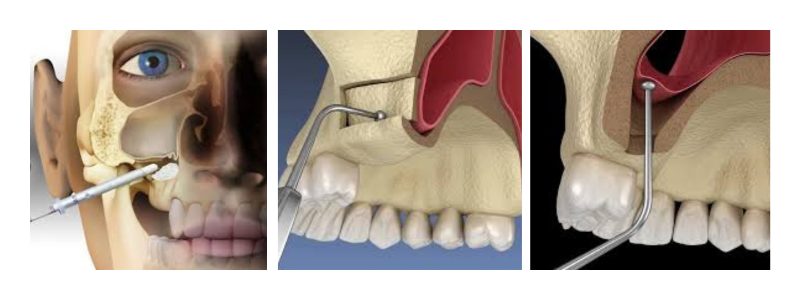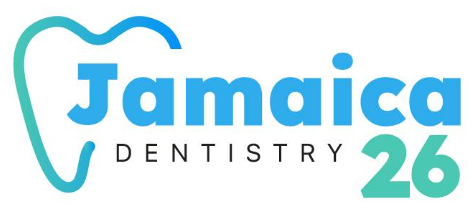Sinus Lifts

Restore Bone for Implants with a Safe Sinus Lift Procedure
A sinus augmentation (also called sinus lift) is a surgical procedure performed to increase the amount of bone in the upper jaw, most often in the region of the upper premolars and molars, to place a dental implant. It is usually needed when the bone volume is not enough to hold a dental implant. Bone resorption may occur due to tooth loss, periodontal disease or natural anatomy, such that placement of the implant may be impractical or impossible without further bone support.
When it comes to dental implants, structural integrity of the jawbone plays an important role. Implants also need a strong base to give them stability, functionality and long-lasting success. In the absence of sufficient bone height and density, implants can fail or loosen with time.
Sinus lift may be particularly suitable when a person has already lost their bones in the upper jaw or when the sinuses are inflated. This treatment allows you to regain sufficient bone volume to continue with the implant treatment in a confident manner. Jamaica 26 Dentistry will help you through expert evaluation and safe, effective sinus lift procedures.
What Is a Sinus Lift?
A sinus lift is commonly referred to as a sinus augmentation which is a surgical procedure that aims to elevate the level or supply of bone in the upper jaw, in the area of molars and premolars. This is performed through a lifting of the Schneiderian membrane (lining of the maxillary sinus) and insertion of bone grafting material between the sinus floor and jawbone. This is aimed at providing a stable base for dental implants.
Upper back cavities that are found between the upper back teeth and below the eyes are referred to as the maxillary sinus. The loss of upper teeth may cause bone under the sinus to start losing size since there is no stimulus, and sinus may increase to fill the missing gap. This creates inadequate bone to hold dental implants in place.
The procedure restores the height required to insert an implant by raising the sinus and providing additional bone. Visit Jamaica 26 Dentistry as our top professionals provide these services with precision and care.
Why Is It Needed?
A sinus lift is typically required when the upper jaw lacks enough bone height to securely support dental implants. Loss of the upper molars and premolars is one of the most common causes and can easily lead to the deterioration of bones over time. When teeth are lost, the adjacent bone lacks stimulation and will gradually reabsorb, the space to have the implant placed will diminish.
Bone loss can also be caused by periodontal disease. Gum infections and abnormalities developing in the supporting structures of the teeth may lead to the jaw bone loosening its strength and thickness.
Some people naturally possess a thin upper jawbone, or low-lying maxillary sinuses, which constrains the amount of space implants can occupy. A successful and long lasting dental implant requires adequate bone to hold it. This can be performed with the help of a sinus lift, which fills an area with graft material.
How the Sinus Lift Procedure Works
Below are the steps involved in the sinus lift procedure:
Initial Evaluation and Planning
Your dentist or oral surgeon will carefully evaluate you before carrying out a sinus lift. This will involve the use of digital X-rays and 3D imaging like a cone-beam CT scan to evaluate the height and anatomy of your upper jaw and sinuses. These scans assist in indicating the correct position of the sinus, the quantity of existing bone, and the need for sinus motor maxillary bone lift prior to implant insertion.
Surgical Steps
The steps followed by a surgeon during the sinus lift procedure are given below:
Accessing the Sinus
The process usually begins with the numbing of the local tissue using a local anesthetic. A cut is made into gum tissue in the upper jaw, close to where the implant will be placed. This enables the surgeon to expose the jawbone and make a small opening to access the sinus floor.
Lifting the Sinus Membrane
The sinus membrane, lining the sinus of the maxilla, is slowly pulled away and raised up with forceps. This procedure must be carried out carefully so as not to rupture the fragile membrane.
Placing Bone Graft Material
After sinus elevation, bone grafting material is inserted into the newly formed space between the sinus floor and the elevated mucosa. This bone will eventually fuse with the opposite bone to add volume and strength.
Types of Graft Materials Used
Several types of bone graft materials may be used during a sinus lift:
Autograft: A bone taken from your own body often from the chin or hip
Allograft: A bone graft taken from human donor
Xenograft: A bone usually taken from an animal source such as bovine (cow)
Synthetic: These materials are made by man and are biocompatible designed to mimic natural bone
The selection of material depends on the specific case, preferences, and medical history of the patient.
Recovery and Aftercare
Recovery and aftercare instructions are given below:
Typical Healing Time
A sinus lift takes about 4 to 9 months to heal, depending on an individual’s health, volume of bone grafted and grafting material. This time permits the newly implanted bone to mature and bind, creating a solid foundation for future dental implants. Long-term implant success requires patience at this stage.
Managing Discomfort and Swelling
For a few days after surgery, you may feel mild discomfort, swelling and slight bleeding in the nose or mouth. It is normally possible to manage pain using prescription or over the counter pain medication. To reduce swelling, cold compress may be applied at intervals after the initial 24 to 48 hrs. It is advisable to avoid vigorous activity during the first days after the surgery.
Instructions for Proper Healing
These precautions are important to protect surgical sites and ensure perfect bone integration:
- Do not blow your nose for 1-2 weeks.
- Open your mouth as you sneeze to relieve the sinus pressure.
- Avoid smoking which may affect the healing.
- Take the soft-food diet within a few days.
- Take prescribed drugs and saline washes.
These precautions minimize the risk of complications such as the rupture of the sinus membrane or displacement of the graft.
When Can Implants Be Placed?
Implants are normally done after the bone has completely healed, and this normally takes between 4-9 months after the procedure. Depending on the quality of the bone in certain situations, there is a possibility to perform the bone grafting and the implant procedure at the same time. However this is a case by case decision.
Risks and Complications
Following are the risks and complications associated with sinus lift procedure:
Sinus Membrane Perforation
Perforation or tearing of the sinus membrane is one of the most common risks of a sinus lift. If this happens, then the procedure can be postponed and repeated later with the intention of giving the membrane a rest. The risk of infection or failure of the graft may also be aggravated by a torn membrane.
Infection or Graft Failure
The graft site is at risk of infection, just like any surgery. Despite its rarity, the graft can come to failure due to infection or develop other complications. To prevent this, strict sterilization procedures and post-operative antibiotics should be taken.
Post-Operative Sinus Infection or Discomfort
The procedure may lead to sinus pressure, sinus congestion, or sinus infection in some patients. These symptoms usually disappear with proper after-care and medication, but you ought to ask about any lingering problems with your dentist or medical provider.
Tips to Minimize Risk
- Select an oral surgeon or periodontist with experience in sinus lift surgery.
- Follow all aftercare instructions including resisting blowing your nose and sneezing violently.
- Use all prescribed medications such as antibiotics and anti-inflammatories as prescribed.
- Do not smoke as it has the effect of slowing down healing, risking infection, and graft failure.
- If symptoms such as painful swelling or continuous bleeding, sinus pain persist, consult your dentist.
Benefits of a Sinus Lift
The benefits of sinus lifts are given below:
- Allows fixation of dental implants where the upper jawbone is not sufficient, mainly the premolar and molar sections.
- It augments the volume of bone and enhances the longevity and stability of dental implants.
- Maintains the facial shape, without resulting in the collapse of bones and preserves the natural shape of the upper jaw.
- Improves oral functionality enabling improved chewing, speech and general comfort with implant supported restorations.
- Enhances the success of dental implants in new placement sites that were not favorable.
- It gives back the confidence to fill in the teeth that have fallen.
FAQs
Is a sinus lift painful?
The process itself is not painful since it is done under local anesthesia and even sedation may be provided. Mild discomfort, swelling or soreness following the surgical procedure is normal but generally handled with medical prescriptions and corrected after surgery care.
How long does it take to heal from a sinus lift?
It generally requires 4 to 9 months to heal depending on the size of the graft and the person’s healing abilities. This period gives time for the bone graft to fuse with the natural bone so that dental implants can be done.
Can a dental implant be placed at the same time as a sinus lift?
Yes, in some cases, if there is sufficient existing bone to secure initial stability, an implant can be inserted during the sinus lift procedure. Many cases require the staged procedure in which the graft takes time to heal first and then an implant is inserted.
What are the risks of a sinus lift?
Possible complications comprise perforation of the sinus membrane, infection, graft failure, or post-operative sinus problems. These complications are uncommon and usually avertable by excellent surgical technique and post-operative care.
Who is a good candidate for a sinus lift?
The perfect candidates are those who do not have sufficient jaw bone height since they either lost their teeth or they had periodontal disease or they are simply anatomically predisposed to be short of the bone in the upper jaw. A thorough dental examination and imaging study will reveal whether dental implants require a sinus lift or not.
